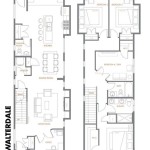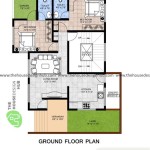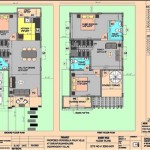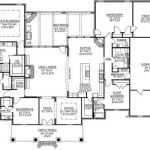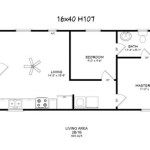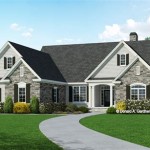Kippen House Coop Plans
Building a chicken coop requires careful planning and consideration. A well-designed coop provides a safe, comfortable, and functional environment for chickens, leading to improved egg production and overall flock health. Kippen House coop plans offer a specific approach to coop construction, often emphasizing practicality and efficiency. This article explores important aspects of Kippen House coop plans and general coop construction considerations.
Key Features of Kippen House Coop Plans
Kippen House coop plans, like other quality plans, typically share several key features:
- Detailed diagrams and instructions for construction.
- Material lists specifying required lumber, hardware, and other components.
- Dimensions and layouts for different flock sizes.
- Guidance on ventilation, insulation, and other critical elements.
- Recommendations for nesting boxes, roosting bars, and other interior features.
Choosing the Right Kippen House Coop Plan
Selecting the appropriate Kippen House plan requires careful consideration of several factors:
- Flock size: The plan should accommodate the number of chickens intended for housing. Overcrowding can lead to stress, disease, and reduced egg production.
- Available space: The coop's footprint should fit comfortably within the designated area, leaving sufficient space for a run.
- Budget: Material costs can vary significantly. Carefully review the material list to ensure the project aligns with budgetary constraints.
- Climate: Consider local weather conditions. The plan should provide adequate ventilation and insulation for both hot and cold temperatures.
Understanding Coop Construction Basics
Regardless of the specific plan chosen, understanding fundamental coop construction principles is essential.
- Framing: A sturdy frame provides structural integrity and ensures the coop's longevity. Pressure-treated lumber is often recommended for framing to resist rot and decay.
- Siding: Exterior siding protects the coop from the elements. Common options include plywood, shiplap, and metal sheeting.
- Roofing: A waterproof roof is critical for protecting the chickens and the coop's interior. Asphalt shingles, metal roofing, and corrugated plastic are common choices.
Ventilation and Insulation
Proper ventilation and insulation are crucial for maintaining a healthy coop environment.
- Ventilation: Adequate ventilation removes excess moisture and ammonia, preventing respiratory issues in chickens. Vents should be strategically placed to encourage airflow without creating drafts.
- Insulation: Insulation helps regulate temperature fluctuations, keeping the coop cooler in summer and warmer in winter. Common insulation materials include rigid foam board and fiberglass insulation.
Interior Features
The interior of the coop should be designed to meet the chickens' basic needs.
- Nesting boxes: Provide enough nesting boxes for all hens, typically one box for every three to four hens. Nesting boxes should be comfortable, dark, and easily accessible for egg collection.
- Roosting bars: Chickens naturally roost at night. Provide sturdy roosting bars at varying heights to accommodate different preferences.
- Flooring: Coop flooring should be easy to clean and maintain. Common options include wood shavings, straw, and sand.
- Lighting: While chickens don't require artificial light, providing supplemental lighting during winter months can encourage egg production.
Predator Protection
Protecting chickens from predators is paramount. Coop design and construction should incorporate predator-proofing measures.
- Hardware cloth: Use hardware cloth instead of chicken wire for runs and windows, as it is more resistant to predator attacks.
- Secure latches: Install secure latches on all doors and access points to prevent predators from entering the coop.
- Run design: A covered run provides additional protection from aerial predators. Burying hardware cloth around the perimeter of the run can deter digging predators.
Maintenance and Cleaning
Regular maintenance and cleaning are essential for maintaining a healthy coop environment.
- Dropping removal: Regularly remove droppings to prevent ammonia buildup and the spread of disease.
- Deep cleaning: Perform a thorough deep cleaning of the coop at least once or twice a year to remove accumulated dirt and debris.
- Pest control: Implement pest control measures to prevent infestations of mites, lice, and other parasites.
Legal Considerations
Before building a chicken coop, it is important to research local zoning regulations and obtain any necessary permits.
- Zoning regulations: Many municipalities have regulations regarding the keeping of chickens, including coop size and placement.
- Permits: Some areas may require building permits for coop construction.
- Homeowner's associations: Check with your homeowner's association for any restrictions on keeping chickens.

Check Out These 5 Funky En Coop Designs Hobby Farms

Green En Coops Kippen House

Custom Coop Construction Ideas Backyard En Plans Coops Easy Diy

American Coop 8 Foot Wide Backyard En Plans Walk In

En Coop Plans 12x8 Walk In For 12 Ens Denmark

Wichita Cabin Coop Diy En Plans Backyard Coops Building A

En Coop Plans 12x8 Walk In For 12 Ens Denmark

A Frame En Coops Sheds For Up To 100 Ens Coop Shed

Super Stylish En Coops

En Coop With Attached Run Building Plans Diy For 6 12 Ens Instant Digital

